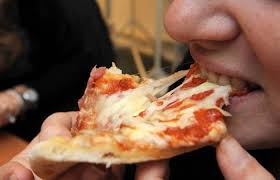 French health officials have confirmed 50 cases of E. coli linked to a type of Nestlé frozen pizza.
French health officials have confirmed 50 cases of E. coli linked to a type of Nestlé frozen pizza.
Of these infections, 48 were caused by E. coli O26 and two by E. coli O103, according to Santé publique France, the French public health agency.
Another 25 cases of hemolytic uremic syndrome (HUS) and Shiga toxin-producing E. coli (STEC) infections are still being investigated. HUS is a type of kidney failure associated with E. coli infections that can result in lifelong, serious health problems and death.
Buitoni brand Fraîch’Up pizzas sold since June 2021 were withdrawn and recalled in mid-March after Nestlé was warned about the potential presence of E. coli O26 in dough used to make them.
Of the 50 patients, 48 are children and two are adults. They fell ill between Jan. 18 and March 14. The two adults are older than 90, with one having developed HUS.
Sick children are between 1 and 17 years old with a median age of 7. Twenty are females and 28 are males. Two youngsters died but it is not known if they ate the pizzas and their deaths are under investigation.
Eleven patients live in Hauts-de-France, eight in Nouvelle Aquitaine, seven in Pays de la Loire, six in Bretagne and Ile-de-France, three in Auvergne-Rhône-Alpes, two each in Bourgogne Franche-Comté, Grand Est, Occitanie and Provence-Alpes-Côte d’Azur and one in Centre Val-de-Loire.
Viiworks Blog tells the story:
Little Marceau, 4 and a half years old, came close to death. The child, poisoned by the E.coli bacterium after having eaten a contaminated pizza, was finally able to be treated by doctors at the Lille hospital. Extremely shocked, her mother testifies to La Dépêche of the days of anguish that the family has spent.
Marceau returned to school just ten days ago with strict recommendations: not to eat salty foods. And, if he hurts himself, do not take anti-inflammatories. “He will never be able to get stung in the arm again either, breathes his mother, still tested by the seven weeks she has just spent. We must keep his veins intact for a transfusion in case he has another kidney problem. .” All that for having eaten a piece of Fraîch’up pizza without knowing that it was contaminated with E. coli bacteria, the weekend of February 12…
Coralie is determined to file a complaint against Buitoni so that all responsibilities are established concerning the ordeal experienced by her family. “And again, it could have been worse,” sighs this 8 and a half month pregnant mother, who remembers her reaction when her partner told her that the doctors did not know if Marceau was going to live or die. “When I arrived at Lille hospital, he greeted me, telling me that the next 72 hours were going to be decisive. That the bacteria was attacking the heart, the kidneys and the brain. I was devastated.”